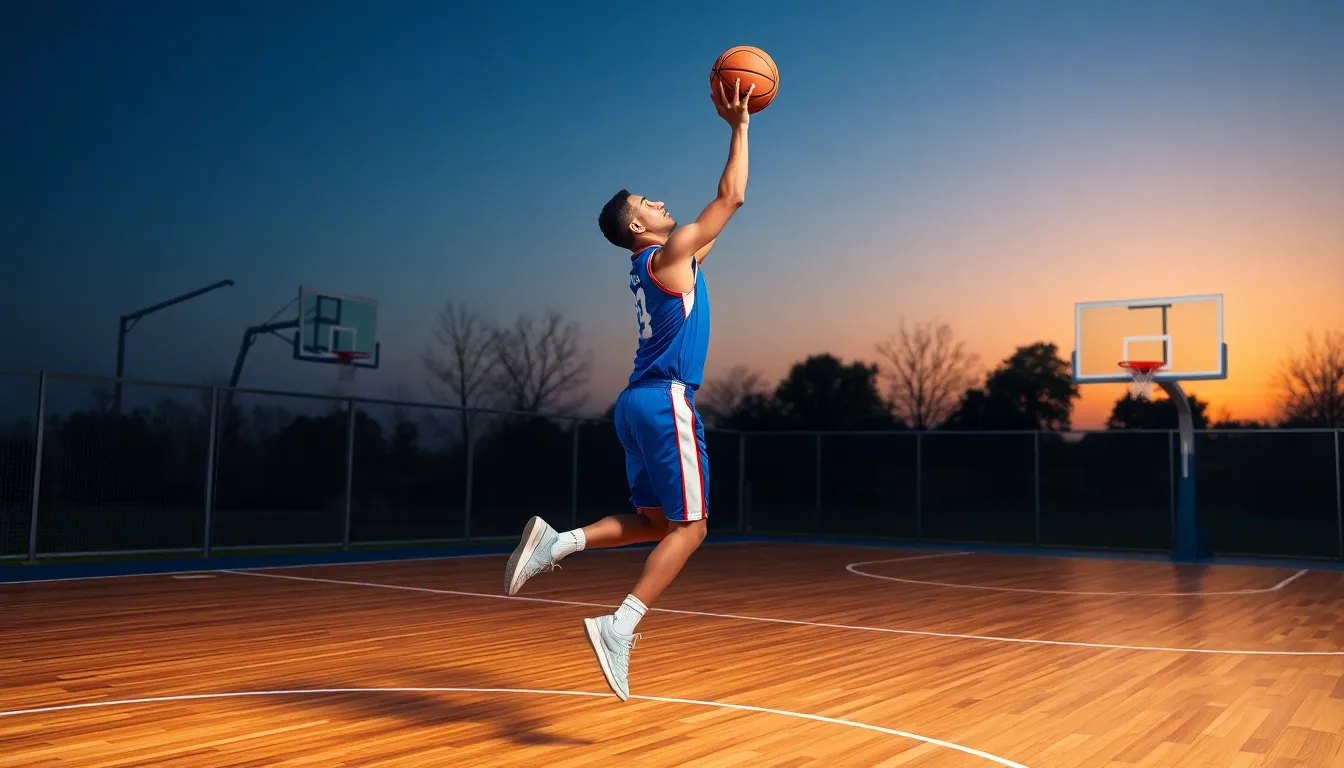Every player knows that basketball isn’t just about dribbling and shooting; it’s a mental game too. When motivation hits a slump, even the best shooters can miss the mark. So how do they keep their heads in the game? The secret lies in a potent mix of passion and strategy that fuels their drive.
Imagine stepping onto the court, heart racing, ready to unleash your inner MVP. It’s not just about winning; it’s about the thrill of the game and the camaraderie that comes with it. Whether it’s a motivational quote that sparks inspiration or a personal goal that pushes boundaries, finding that spark can turn a lackluster practice into a highlight reel moment. Get ready to explore how the right mindset can elevate any player’s game and keep them coming back for more.
Table of Contents
ToggleUnderstanding Basketball Motivation
Basketball motivation plays a crucial role in athletic performance. A player’s drive influences skills development, teamwork, and overall enjoyment on the court.
The Importance of Motivation in Sports
Motivation serves as a primary force behind success in sports. It fosters determination, encourages perseverance, and promotes a strong work ethic. He or she who feels motivated often pushes past challenges, enhancing their abilities. Without motivation, enthusiasm wanes, which can hinder progress and inhibit potential. Emphasizing consistent motivation creates an environment where athletes thrive and excel.
Types of Motivation in Basketball
Several types of motivation exist within basketball. Intrinsic motivation stems from personal goals and passion for the game. Players motivated intrinsically often focus on self-improvement and skill mastery. Extrinsic motivation arises from external factors, such as recognition, rewards, or competition. Athletes may strive for trophies, accolades, or praise from peers and coaches. Both forms of motivation contribute to a balanced approach in training and competition, enhancing performance on and off the court.
Sources of Basketball Motivation

Basketball players often draw motivation from various sources that enhance their performance and commitment to the game.
Intrinsic Motivation
Intrinsic motivation stems from personal satisfaction and a love for the sport. Players with a deep passion for basketball actively seek to improve their skills and enjoy the challenges presented by the game. Setting personal goals fuеls their desire to succeed, creating a rewarding environment where they find joy in practice and gameplay. Achievements like mastering a difficult shot or improving defensive techniques provide internal gratification, reinforcing their commitment to continuous improvement. This self-driven pursuit fosters resilience, enhancing overall performance while keeping players engaged during both practice sessions and games.
Extrinsic Motivation
Extrinsic motivation relies on external factors influencing a player’s drive. Recognition from coaches, peers, and fans inspires athletes to reach for their full potential. Competitive environments in leagues play a significant role, with players striving for accolades such as trophies and titles. Rewards, such as scholarships or career opportunities, motivate individuals to excel further within the sport. Acknowledgment from teammates and positive reinforcement also cultivates a sense of accomplishment, boosting confidence and work ethic. Leveraging external motivators nurtures a dynamic atmosphere where players actively push themselves to achieve success both individually and collectively.
Strategies to Enhance Basketball Motivation
Motivation plays a crucial role in basketball performance. Several strategies can help players stay focused and inspired.
Setting Goals
Establishing clear and achievable goals keeps players motivated. Goals should be specific, measurable, attainable, relevant, and time-bound. For example, improving shooting accuracy by a certain percentage within a defined timeframe provides a concrete target. Regularly revisiting goals helps maintain commitment and assess progress. Adjusting goals based on performance ensures they remain relevant and challenging. Players can also set both short-term and long-term goals, allowing for a continuous sense of achievement. By breaking down large objectives into smaller milestones, players build confidence and stay motivated throughout the season.
Positive Visualization
Visualization serves as a powerful motivational tool in basketball. Imagining successful performances can boost confidence and performance levels. Athletes can visualize themselves scoring points, making assists, or executing perfect plays. Engaging all senses during this process enhances effectiveness and reinforces positive outcomes. Creating a mental image of success helps players approach practices and games with optimism. Routine visualization sessions can ease performance anxiety and improve focus during high-pressure moments. Incorporating this technique into daily practice habits transforms mindset and encourages a proactive attitude toward challenges on the court.
Overcoming Motivation Challenges
Motivation challenges often arise during a basketball player’s journey. Recognizing and addressing these issues is vital for sustained growth and enjoyment in the sport.
Dealing with Burnout
Burnout frequently affects players who push themselves excessively. Symptoms often include fatigue, decreased enthusiasm for practice, and reduced performance levels. To combat burnout, players need to adjust their training regimen by incorporating rest days and varying activities. Engaging in different sports or physical activities can reignite passion for the game. Players should also prioritize mental health, using relaxation techniques such as meditation or deep breathing. This balance ensures that excitement for basketball remains alive, allowing athletes to approach the game with renewed energy.
Handling Setbacks
Setbacks are an inevitable part of sports. Players encounter injuries, lost games, or failed attempts to achieve personal goals. These situations can shake confidence and diminish motivation. A constructive response to setbacks includes reframing the experience as a learning opportunity. Focusing on what can be learned helps shift attention from the failure to future improvement. Seeking support from coaches and teammates can also aid recovery. It fosters a sense of community and shared experience. Establishing realistic expectations plays a pivotal role in navigating obstacles effectively, ensuring athletes remain motivated through tough times.
Maintaining motivation in basketball is vital for achieving success and personal growth. Players must recognize the power of both intrinsic and extrinsic motivation to fuel their passion for the game. By setting clear goals and employing visualization techniques, they can create a focused mindset that enhances performance.
Addressing challenges like burnout and setbacks is equally important. Embracing rest and seeking support can help athletes navigate difficult times while keeping their love for the sport alive. Ultimately, a strong motivational foundation not only improves skills but also enriches the overall experience on the court. With the right mindset and strategies in place, players can transform their journey into one filled with excitement and achievement.



